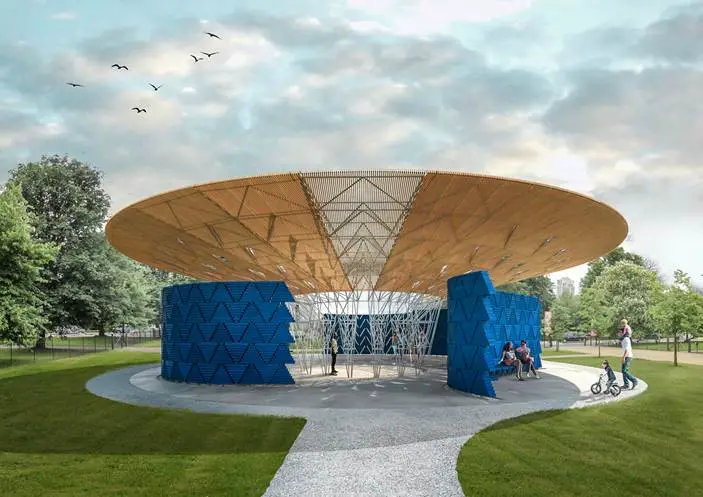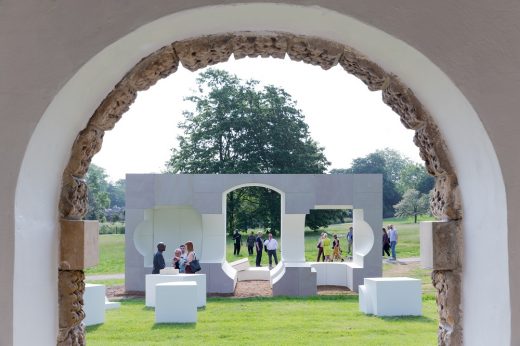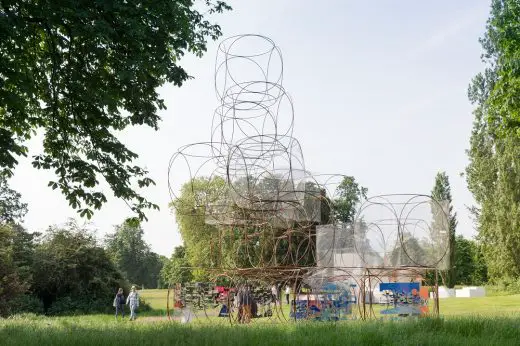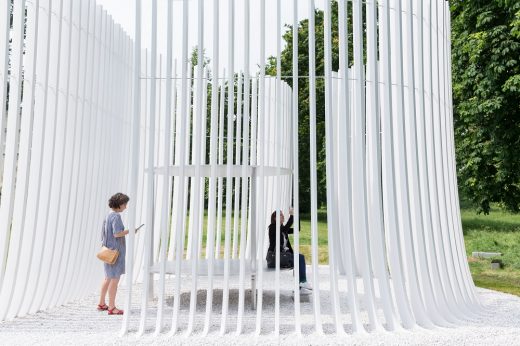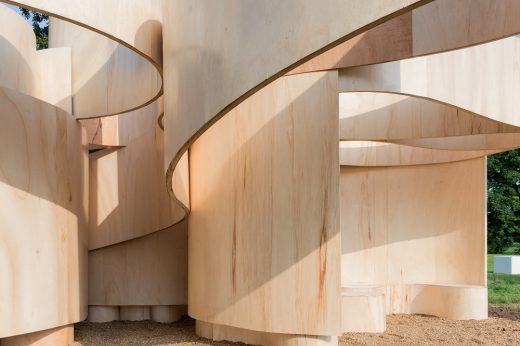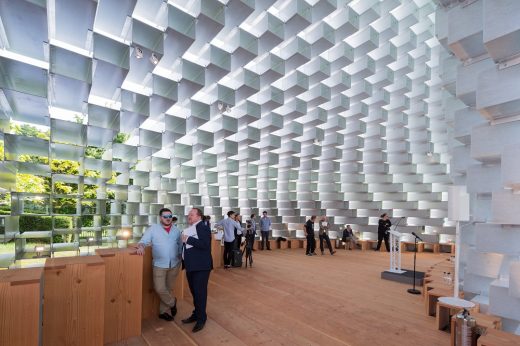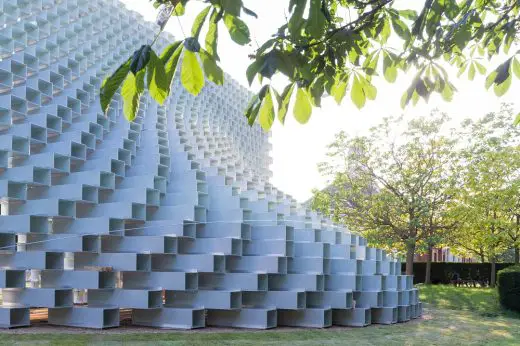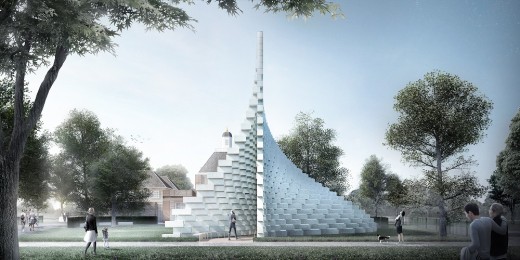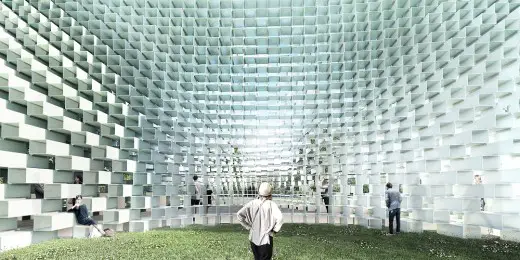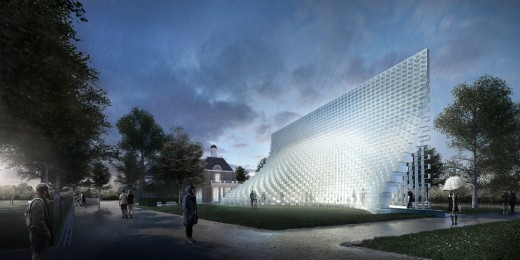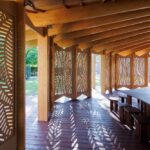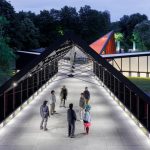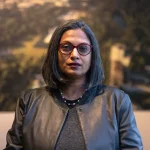Serpentine Pavilion 2017 Architect, Kensington Gardens Project, Pictures, England
Serpentine Pavilion 2017
Diébédo Francis Kéré Architect for Arts Project in Kensington Gardens, London, UK – News
23 Jun 2017
Serpentine Pavilion 2017 by Francis Kéré
British architect Adrian Welch, Founding Editor of e-architect.com, interviews AECOM’s Project Engineer for Francis Kéré’s Serpentine Pavilion about their role in this internationally renowned cultural project.
Serpentine Pavilion 2017 by Francis Kéré – interview by Adrian Welch
21 Feb 2017
Serpentine Gallery Pavilion 2017
Serpentine Gallery Pavilion 2017 Design
Press Release – 21 February 2017
AWARD-WINNING ARCHITECT FRANCIS KÉRÉ TO DESIGN THE SERPENTINE PAVILION 2017
23 June – 8 October 2017
Sponsored by Goldman Sachs
Diébédo Francis Kéré, the award-winning architect from Gando, Burkino Faso, has been commissioned to design the Serpentine Pavilion 2017, responding to the brief with a bold, innovative structure that brings his characteristic sense of light and life to the lawns of Kensington Gardens.
Kéré, who leads the Berlin-based practice Kéré Architecture, is the seventeenth architect to accept the Serpentine Galleries’ invitation to design a temporary Pavilion in its grounds. Since its launch in 2000, this annual commission of an international architect to build his or her first structure in London at the time of invitation has become one of the most anticipated events in the global cultural calendar and a leading visitor attraction during London’s summer season. Serpentine Artistic Director Hans Ulrich Obrist and CEO Yana Peel made their selection of the architect, with advisors David Adjaye and Richard Rogers.
Serpentine Pavilion 2017, Designed by Francis Kéré, Design Render, Exterior:
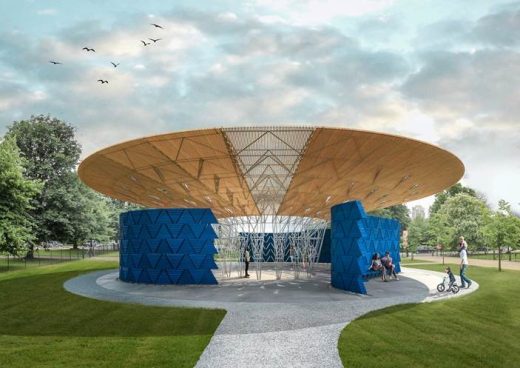
photo © Kéré Architecture
Inspired by the tree that serves as a central meeting point for life in his home town of Gando, Francis Kéré has designed a responsive Pavilion that seeks to connect its visitors to nature – and each other. An expansive roof, supported by a central steel framework, mimics a tree’s canopy, allowing air to circulate freely while offering shelter against London rain and summer heat.
Serpentine Pavilion 2017, Designed by Francis Kéré, Design Render, Interior:
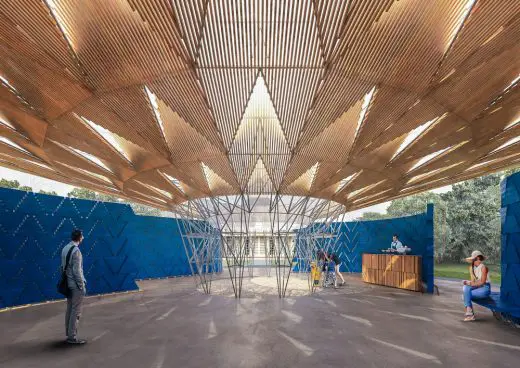
photo © Kéré Architecture
Kéré has positively embraced British climate in his design, creating a structure that engages with the ever-changing London weather in creative ways. The Pavilion has four separate entry points with an open air courtyard in the centre, where visitors can sit and relax during sunny days. In the case of rain, an oculus funnels any water that collects on the roof into a spectacular waterfall effect, before it is evacuated through a drainage system in the floor for later use in irrigating the park. Both the roof and wall system are made from wood. By day, they act as solar shading, creating pools of dappled shadows. By night, the walls become a source of illumination as small perforations twinkle with the movement and activity from inside.
As an architect, Kéré is committed to socially engaged and ecological design in his practice, as evidenced by his award-winning primary school in Burkina Faso, pioneering solo museum shows in Munich and Philadelphia, and his immersive installation in the 2014 exhibition Sensing Spaces at London’s Royal Academy.
Gando Primary School; Gando, Burkina Faso, 2001:
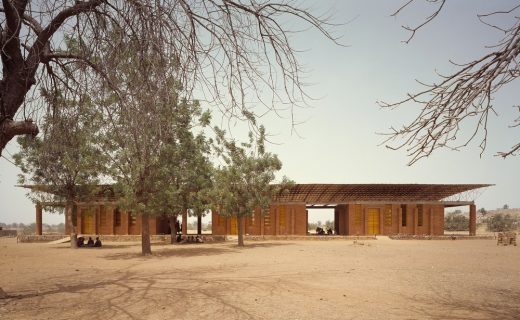
photo © Simeon Duchoud
Building on these ideas, Kéré’s Serpentine Pavilion will host a programme of events exploring questions of community and rights to the city, as well as the continuation of Park Nights, the Serpentine’s public performance series, supported by COS. Now in its third year, Build Your Own Pavilion, the digital platform and nationwide architecture campaign supported by Bloomberg Philanthropies, will invite young people to consider the relationship between architecture and public space, to ask critical questions about the future of their cities and to design the cities in which they would like to live.
Kéré’s design follows Bjarke Ingels Group (BIG), whose ‘unzipped wall’ structure was visited by more than 250,000 people in 2016, making it one of the most visited Pavilions to date. Four commissioned Summer Houses in 2016 by Kunlé Adeyemi – NLÉ (Amsterdam/Lagos), Barkow Leibinger (Berlin/New York), Yona Friedman (Paris) and Asif Khan (London), attracted almost 160,000 visitors.
Francis Kéré, architect:
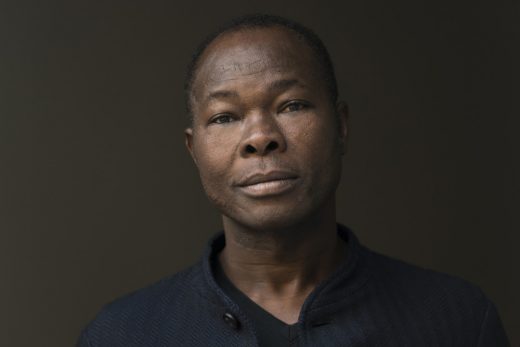
photo © Erik Jan Ouwerkerk
Diébédo Francis Kéré, architect of the 17th Serpentine Pavilion, said: “As an architect, it is an honour to work in such a grand park, especially knowing the long history of how the gardens evolved and changed into what we see today. Every path and tree, and even the Serpentine lake, were all carefully designed. I am fascinated by how this artificial landscape offered a new way for people in the city to experience nature. In Burkina Faso, I am accustomed to being confronted with climate and natural landscape as a harsh reality. For this reason, I was interested in how my contribution to this Royal Park could not only enhance the visitor’s experience of nature, but also provoke a new way for people to connect with each other.”
Camper Pop-up Shop at Vitra; Weil am Rhein, Germany, 2015:
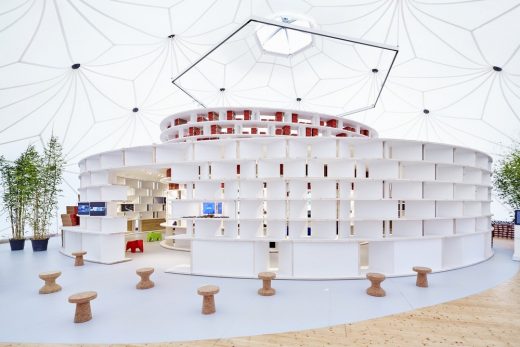
photo © Vitra. Photography by Eduardo Perez
Serpentine Galleries CEO, Yana Peel, and Artistic Director, Hans Ulrich Obrist, said: “We are thrilled to reveal the designs for Francis Kéré’s Pavilion, which highlight the power of simplicity by reducing architecture to its core elements, modelled in harmony with the natural context of Royal Kensington Gardens. This Pavilion will be a space of conversation, collaboration and exchange. We share Kéré’s belief that architecture, at its best, can enhance our collective creativity and push people to take the future into their own hands.”
Richard Gnodde, Vice Chairman of the Goldman Sacks Group Inc. and CEO of Goldman Sachs International, said: “We are delighted to support the Serpentine’s Summer Pavilion programme for a third year running. Francis Kéré’s design this year promises to celebrate the diversity, vibrancy and collaborative potential of communities, something we value deeply at Goldman Sachs.”
David Glover, Technical Advisor said: “The Serpentine Pavilion is about the opportunity of using everyday materials and techniques in innovative and creative ways that challenge our perception of architecture. Francis Kéré and his team have achieved this by creating a Pavilion that, through the use of colour and form, will continually morph under the influence of light, shadow, its users and the surrounding park to surprise and delight the visitor.”
Gando Primary School; Gando, Burkina Faso, 2001:
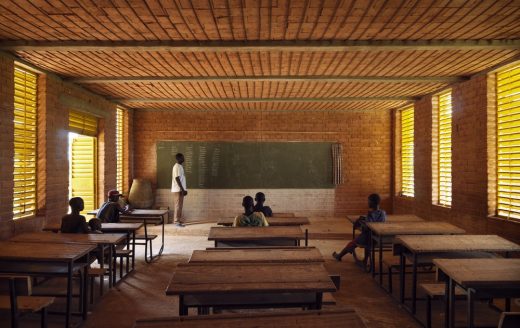
photo © Enrico Cano
The annual Serpentine Pavilion commission has become an international site for architectural experimentation, presenting projects by some of the world’s greatest architects, from Zaha Hadid in 2000 to Bjarke Ingels Group in 2016.
The brief is to design a 300-square-metre Pavilion that is used as a community hub and café by day and a forum for learning, debate and entertainment at night. Each Pavilion is sited on the Serpentine Gallery’s lawn for four months and the immediacy of the commission makes it a pioneering model worldwide.
The selection of an architect, someone who has consistently extended the boundaries of architectural practice but is yet to build a structure in London, is led by the curatorial approach that guides all Serpentine programming: introducing contemporary artists and architects to the widest public audience.
Camper Pop-up Shop at Vitra in Weil am Rhein, Germany, built 2015:
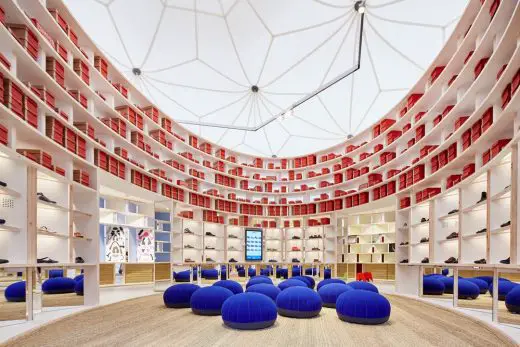
photo © Vitra. photograph by Eduardo Perez
The Serpentine Pavilion is among the top ten most visited architectural and design exhibitions in the world. There is no budget for the project, which is realised through sponsorship, in-kind support and the sale of the Pavilion.
Technical Advisor: David Glover
Engineering and all technical services: AECOM
Goldman Sachs is headline sponsor of the Serpentine Pavilion 2017
National Park of Mali; Bamako, Mali, 2010:
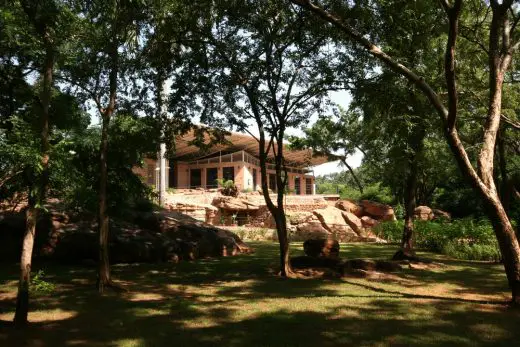
photo © Kéré Architecture
Serpentine Gallery Pavilion Architect for 2017
Diébédo Francis Kéré
Diébédo Francis Kéré is the principal architect at Kéré Architecture based in Berlin, founded in 2005. Kéré was born in 1965 in Gando, Burkina Faso, west Africa and trained at the Technical University of Berlin.
Kéré Architecture has been recognised nationally and internationally with awards including the Aga Khan Award for Architecture (2004) for his first building, a primary school in Gando, Burkina Faso; LOCUS Global Award for Sustainable Architecture (2009); Global Holcim Award Gold (2011 and 2012); Green Planet Architects Award (2013); Schelling Architecture Foundation Award (2014) and the Kenneth Hudson Award – European Museum of the Year (2015).
Projects undertaken by Francis Kéré span countries including Burkina Faso, Mali, China, Mozombique, Kenya, Togo, Sudan, Germany, and Switzerland. He has taught internationally including the Technical University of Berlin and he has held professorships at the Harvard Graduate School of Design and Accademia di Architettura di Mendriso in Switzerland.
Kéré’s work has recently been the subject of solo exhibitions: Radically Simple at the Architecture Museum in Munich (2016) and The Architecture of Francis Kéré: Building for Community, Philadelphia Museum of Art (2016). His work has also been selected for group exhibitions Small Scale, Big Change: New Architectures of Social Engagement, Museum of Modern Art, New York (2010) and Sensing Spaces, Royal Academy, London (2014).
Gando Primary School Extension; Gando, Burkina Faso, 2008:
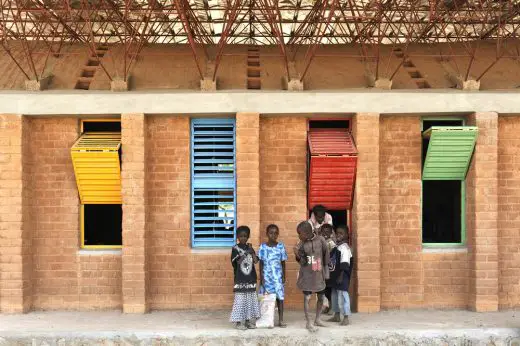
photo © Erik Jan Ouwerkerk
Goldman Sachs
The Goldman Sachs Group, Inc. is a leading global investment banking, securities and investment management firm that provides a wide range of financial services to a substantial and diversified client base that includes corporations, financial institutions, governments and individuals. Founded in 1869, the firm is based in New York and it maintains offices in all major financial centres around the world.
AECOM with David Glover
AECOM is a global design and engineering firm dedicated to creating, enhancing and sustaining the world’s built, natural and social environments. David Glover is renowned for his leadership in tackling today’s big challenges in the built environment.
Bloomberg Philanthropies
Through innovative partnerships and bold approaches, the Bloomberg Philanthropies arts program works to increase access to culture and strengthen arts organizations. Through a wide range of dynamic partnerships with visual, performing and literary arts organisations, Bloomberg Philanthropies has a strong commitment to artistic excellence, emerging and ground-breaking works, and expanding audience access to diverse and exciting cultural opportunities around the world. Bloomberg Philanthropies works in 120 countries and focuses on creating lasting change in five key areas: the Arts, Public Health, Environment, Education and Government Innovation. For more information, please visit bloomberg.org or follow Bloomberg on Facebook, Instagram, Snapchat, and Twitter @BloombergDotOrg.
Serpentine Pavilion History
Serpentine Pavilion architects to date are: Bjarke Ingels Group (BIG), 2016; selgascano, 2015; Smiljan Radić, 2014; Sou Fujimoto, 2013; Herzog & de Meuron and Ai Weiwei, 2012; Peter Zumthor, 2011; Jean Nouvel, 2010; Kazuyo Sejima and Ryue Nishizawa, SANAA, 2009; Frank Gehry, 2008; Olafur Eliasson and Kjetil Thorsen, 2007; Rem Koolhaas and Cecil Balmond, with Arup, 2006; Álvaro Siza and Eduardo Souto de Moura with Cecil Balmond, Arup, 2005; MVRDV with Arup, 2004 (un-realised); Oscar Niemeyer, 2003; Toyo Ito and Cecil Balmond – with Arup, 2002; Daniel Libeskind with Arup, 2001; and Zaha Hadid, who designed the inaugural Pavilion in 2000. Serpentine Summer Houses architects in 2016 were: Kunlé Adeyemi – NLÉ (Amsterdam/Lagos), Barkow Leibinger (Berlin/New York), Yona Friedman (Paris) and Asif Khan (London).
SERPENTINE GALLERIES SPRING SEASON
2 March – 21 May 2017
Open 10am – 6pm Tuesday – Sunday and Bank Holidays
A World View: John Latham
Serpentine Gallery
Speak: Tania Bruguera, Douglas Gordon, Laure Prouvost, Cally Spooner
Serpentine Sackler Gallery
8 Jun 2016
Serpentine Gallery Pavilion 2016
Serpentine Gallery Pavilion + Summer Houses 2016
Photos of the completed paviloion and houses:
Serpentine Pavilion 2016 designed by Bjarke Ingels Group (BIG); (10 June – 9 October):
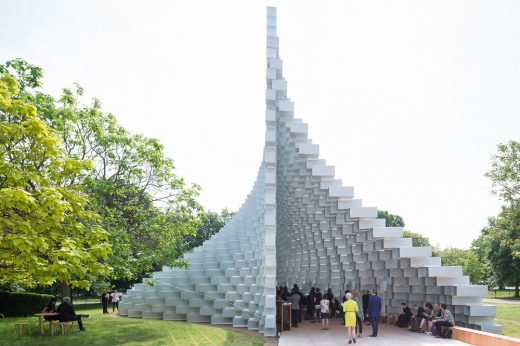
photographs © Iwan Baan
Architect Bjarke Ingels in front of the Serpentine Pavilion 2016 designed by Bjarke Ingels Group (BIG); (10 June – 9 October):
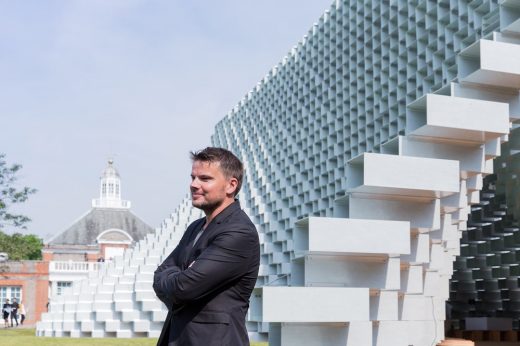
Serpentine Pavilion 2016 designed by Bjarke Ingels Group (BIG); (10 June – 9 October):
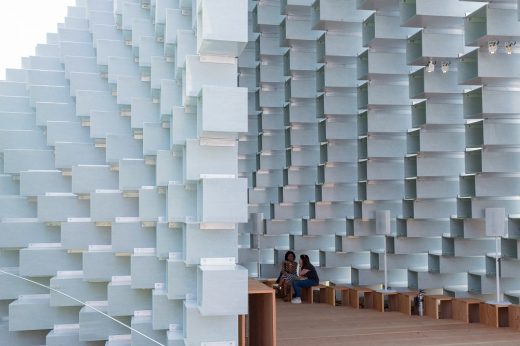
photographs © Iwan Baan
7 Jun 2016
Press preview this morning, of the design by Danish architect Bjarke Ingels. He heads the architectural practice BIG, which he founded in 2005 with offices in Copenhagen, and, in recent years, New York.
Serpentine Pavilion 2016 designed by BIG:
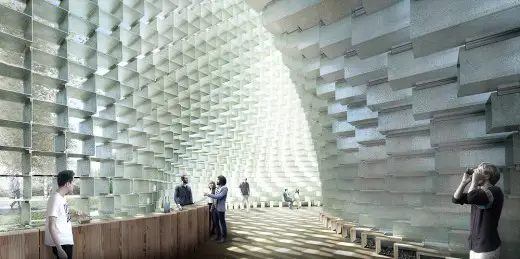
Kunlé Adeyemi’s Summer House is an inverse replica of Queen Caroline’s Temple – a tribute to its robust form, space and material, recomposed into a new sculptural object:
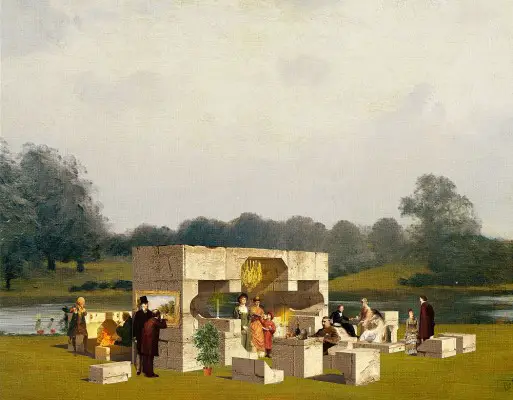
Barkow Leibinger were inspired by another, now extinct, 18th Century pavilion also designed by William Kent, which rotated and offered 360 degree views of the Park:
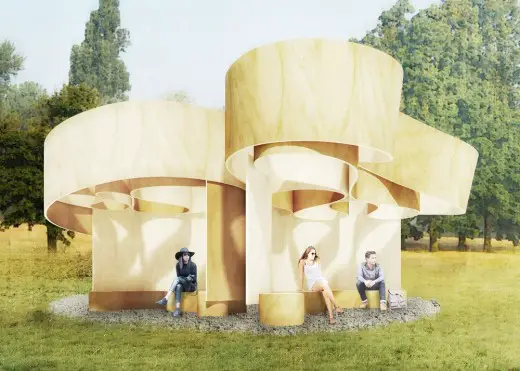
Yona Friedman’s Summer House takes the form of a modular structure that can be assembled and disassembled in different formations:
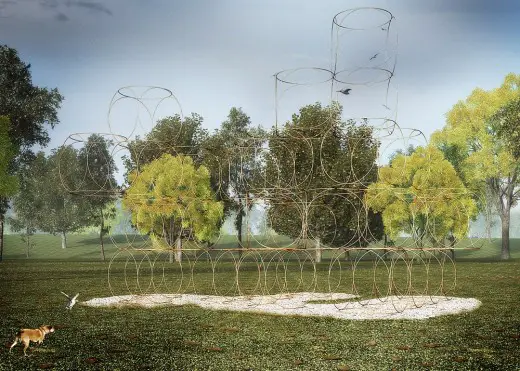
Asif Khan’s design is inspired by the fact that Queen Caroline’s Temple was positioned in a way that it would allow it to catch the sunlight from The Serpentine lake:
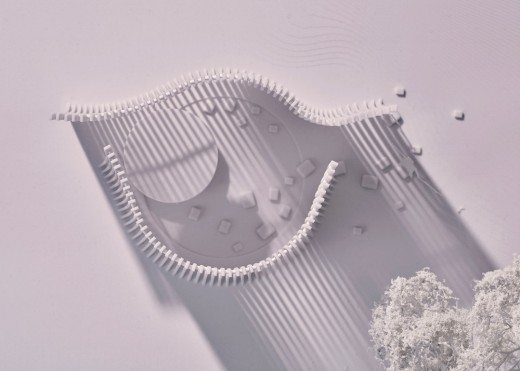
Dates: 10 Jun 2016 to 9 Oct 2016
Admission: free
Park Nights, Serpentine Gallery
Park Nights 2016 prelude: Serpentine Architecture Programme conversations
8 Jun 2016 – 12:00 pm to 3:00 pm
Bjarke Ingels, Kunlé Adeyemi, Frank Barkow and Regine Leibinger, Yona Friedman and Asif Khan discuss their designs for the 2016 Pavilion and Summer Houses with Julia Peyton-Jones and Hans Ulrich Obrist, in a series of panels moderated by Vicky Richardson
Website: Serpentine Gallery Pavilion + Summer Houses 2016 – Park Nights
Saturday Talks: Amira Gad on the Serpentine Pavilion 2016
11 Jun 2016 – 3:00 PM
Curator, Amira Gad, leads a tour of the Serpentine Pavilion 2016 designed by Bjarke Ingels Group (BIG)
Website: Serpentine Gallery Pavilion 2016 – tour by Amira Gad
Previously on e-archietct:
13 May 2016
Serpentine Gallery Pavilion + Summer Houses 2016 News Update
“Construction of the 2016 Serpentine Pavilion and Summer Houses has started. For the first time, the Serpentine Galleries has expanded its annual architecture programme to include four Summer Houses, located a short walk from the Gallery in Kensington Gardens, in addition to the 16th Pavilion on the Gallery lawn.
For the fourth year running AECOM, in collaboration with David Glover, is delivering technical advisory services for the project” — the Serpentine Galleries
26 Feb 2016
Serpentine Gallery Summer Houses 2016
10 June – 9 October 2016
Sponsored by Goldman Sachs
Location: Kensington Gardens, London, W2 3XA, UK
Serpentine Pavilion 2016 Designed by Bjarke Ingels Group (BIG)
Four Serpentine Summer Houses designed by Kunlé Adeyemi – NLÉ, Barkow Leibinger, Yona Friedman and Asif Khan
In tandem with the 16th Pavilion, the Serpentine expands its internationally acclaimed programme of exhibiting architecture in a built form by commissioning four architects to each design a 25sqm Summer House.
Queen Carolines Temple:
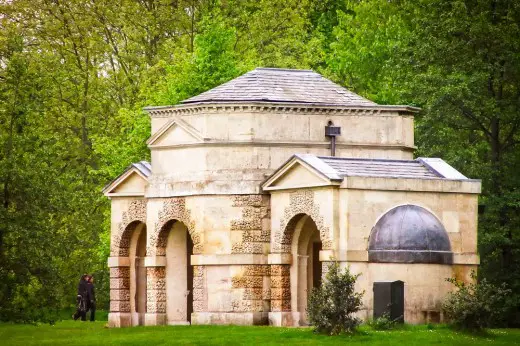
photo by Garry Knight
The four Summer Houses are inspired by the nearby Queen Caroline’s Temple, a classical style summer house, built in 1734 and a stone’s throw from the Serpentine Gallery. In line with the criteria for the selection of the Pavilion architect, each architect chosen by the Serpentine has yet to build a permanent building in England.
The Serpentine Pavilion will be designed by Bjarke Ingels Group (BIG) (Copenhagen/New York); the four Summer Houses will be designed by Kunlé Adeyemi – NLÉ (Amsterdam/Lagos); Barkow Leibinger (Berlin/New York); Yona Friedman (Paris); and Asif Khan (London).
Serpentine Pavilion 2016 Designed by Bjarke Ingels Group (BIG)
Bjarke Ingels (born 2 October 1974) is a Danish architect. He heads the architectural practice Bjarke Ingels Group (BIG), which he founded in 2005 with offices in Copenhagen and New York.
Location: Kensington Gardens, London, W2 3XA, UK
Four Summer Houses in the Serpentine 2016 Programme
Serpentine Gallery Pavilion info from the Serpentine Gallery
Location: Kensington Gardens, West London, W2 3XA, England, UK
London Building Designs
Contemporary London Architectural Designs
London Architecture Links – chronological list
London Architecture Tours – bespoke UK capital city walks by e-architect
Serpentine Pavilion London Architecture
Serpentine Gallery Pavilion
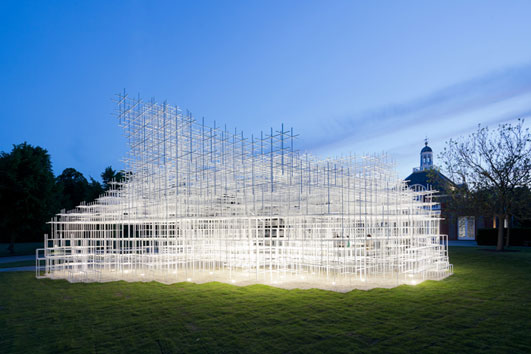
Serpentine Gallery Pavilion 2013 Designed by Sou Fujimoto © Sou Fujimoto Architects ; Image © 2013 Iwan Baan
Serpentine Pavilion
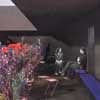
pictures from Serpentine Gallery
Serpentine Gallery Pavilion 2015
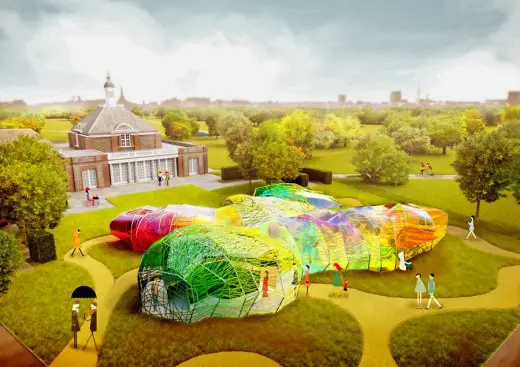
photo © Steven Kevin Howson / SelgasCano
Serpentine Sackler Gallery, Kensington Gardens, London, UK
Serpentine Pavilion London Architects
Past Pavilion architects:
Serpentine Pavilion 2007 original architect : Snøhetta
Serpentine Pavilion architect 2006 : Rem Koolhaas
Serpentine Pavilion architect 2005 : Álvaro Siza & Eduardo Souto de Moura
Serpentine Pavilion architect 2003 : Oscar Niemeyer
Serpentine Pavilion architect 2002 : Toyo Ito
Serpentine Pavilion architect 2001 : Daniel Libeskind
Serpentine Pavilion architect 2000 : Zaha Hadid Architects
Comments / photos for the Serpentine Pavilion 2017page welcome

